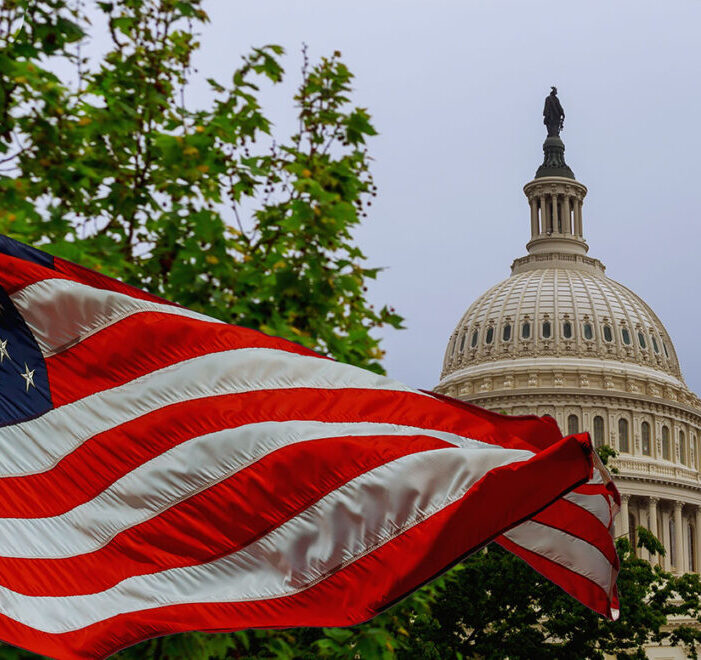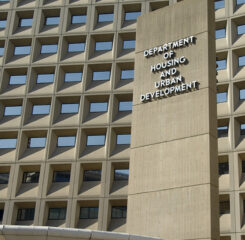New Heightened Scrutiny Guidance Answers Some Questions, Raises New Ones
On March 22, the Centers for Medicare & Medicaid Services (CMS) issued new guidance to states on how to implement the HCBS Settings Rule with respect to heightened scrutiny. States and providers have been waiting for this guidance for some time to help inform their efforts to comply with the rule.
The new guidance answers a number of questions for both states implementing the rule and settings subject to it. For one, it provides new information about what information states can and should share with CMS with respect to settings subject to heightened scrutiny, and how CMS will conduct heightened scrutiny reviews. It also describes how states can work with providers to come into compliance with the rule without needing heightened scrutiny from CMS. Further, it clarifies that rural providers are not automatically isolating to those they serve. These are each discussed in further depth below.
At the same time, new questions emerge from the guidance. For one, CMS explains a process of reviewing a sample of settings a state submits for heightened scrutiny (e.g., identified settings may not all be reviewed), however does not explain how the sample will be drawn, the size of the sample or what specifically will happen with providers that are not part of the sample. In addition, the guidance replaces previous guidance that said life plan communities are not considered to be isolating. The new guidance has no such provision, raising questions as to what level of scrutiny these providers may face.
At a high level, the guidance devolves significant discretion on the Settings Rule to states. Beyond helping settings comply without heightened scrutiny review from CMS, states are also seemingly given broad latitude with respect to what information to share about settings they select for heightened scrutiny. Further, states are tasked with applying feedback they get from CMS from the sampled settings it reviews to non-sampled settings. What that application will look like, however, is unclear.
The following provides a summary of the new guidance as well as analysis of certain sections of import to LeadingAge members. In the below, we generally refer to settings rather than providers. Some providers may have a single setting, or site, while others may have multiple settings in operation, each of which would be separately assessed for compliance with Settings Rule. We encourage all LeadingAge HCBS members to review the new guidance and work with their states on next steps. For those that may have compliance issues related to the effect of isolating individuals, we encourage members to work quickly with their respective state to address those and minimize the need for heightened scrutiny from CMS.
Members may contact Brendan Flinn of the LeadingAge staff with questions or concerns about the new guidance or the Settings Rule more broadly.
Summary of HCBS Settings Rule Heightened Scrutiny Guidance
Types of Settings That Require Heightened Scrutiny
The new guidance begins by repeating language in prior guidance and in the Settings Rule itself, listing the types of settings will need to undergo heightened scrutiny:
- Settings that are located in a building that is also a publicly- or privately-operated facility that provides inpatient institutional treatment;
- Settings that are in a building located on the grounds of, or immediately adjacent to, a public institution; and
- Any other settings that have the effect of isolating individuals receiving Medicaid home and community-based services (HCBS) from the broader community of individuals not receiving Medicaid HCBS.
After this, the guidance provides new and/or updated information related to heightened scrutiny, discussed in the sections below.
Settings that Isolate Individuals
CMS will consider the below factors when determining whether a setting isolates the people they serve:
- Due to the design or model of service provision in the setting, individuals have limited, if any, opportunities for interaction in and with the broader community, including with individuals not receiving Medicaid-funded HCBS;
- The setting restricts beneficiary choice to receive services or to engage in activities outside of the setting; or
- The setting is physically located separate and apart from the broader community and does not facilitate beneficiary opportunity to access the broader community and participate in community services, consistent with a beneficiary’s person-centered service plan.
States have the discretion to include additional factors beyond these, but those must be made clear to stakeholders and ultimately CMS.
This new language is written to replace prior guidance on settings that have the effect of isolating individuals. Of particular note for LeadingAge members is that the prior guidance specifically said that life plan communities (LPCs) do not isolate individuals that live in such settings. The new guidance does not have similar language about LPCs in place. It is unclear whether CMS continues to consider LPCs as not having the effect of isolating individuals and we are working to seek clarity on this matter.
Rural Settings
The new guidance says that settings in rural areas are not “automatically presumed to have qualities of an institution” or presumed to be isolating to those they serve. Rather, CMS advises states to compare opportunities to engage with the community within a specific geographic area (rural and otherwise) between Medicaid HCBS beneficiaries and other individuals (e.g., the general public).
Early Compliance with the Settings Rule
The guidance sets forth a process through which states can work with settings they have identified as having the effect of isolating individuals receiving Medicaid HCBS to come into compliance with the Settings Rule without needing to undergo heightened scrutiny.
Per CMS, if a setting in this situation comes into compliance with the Settings Rule and addresses any issues related to having the effect of isolating to their state’s satisfaction by July 1, 2020, then their state does not need to include that setting in what they send to CMS for heightened scrutiny.
Those settings would be identified in a state’s statewide transition plan for public comment, but most likely not be subject to further scrutiny from CMS.
Note: Settings that are co-located with an institution such as a nursing home, and settings that do not come into compliance with respect to having the effect of isolating individuals before July 1, 2020, will be subject to heightened scrutiny review from CMS.
The Settings Rule and HIPAA
The guidance includes information for states on how they should handle potential HIPAA-protected information when making public disclosures about settings subject to the Settings Rule.
Public disclosures could include statewide transition plans, which are public, as well as other documents a state could publish for public comment, such as a list of settings that do not require heightened scrutiny.
According to CMS, the addresses and locations of settings that are either on the grounds of or adjacent to institutions or in buildings that provide inpatient institutional treatment are not considered to be HIPAA-protected information, as these are generally known to the public. That information, however, may be protected by HIPAA for settings that have compliance issues related to the effect of isolating individuals. For this group of settings, CMS advises states to disclose generalized descriptions of these settings rather than setting names and addresses. If a state deems it necessary to disclose names and addresses, they must take precautions to protect individual protected health information (PHI) and receive consent from each individual (or their representative) served in that setting. States are given latitude to disclose more information about settings that have the effect of isolating individuals to key stakeholder groups, such as Protection and Advocacy organizations, Area Agencies on Aging, Aging & Disability Resource Centers and other relevant groups.
Public Comment
As discussed previously, states will make a number of documents available for public comment, including its statewide transition plan and lists of settings that comply with the Settings Rule and/or require heightened scrutiny. The following is a full description included in the new guidance of what states should make available for public comment. Note that the information listed here could be published as one document, or separately.
- How the state identified settings falling into any of the three categories of settings presumed to have qualities of an institution.
- A numbered list of settings identified for each category of settings that the state believes overcomes the presumption that the settings are institutions. The list should include the presumptively institutional category applicable to the setting and a summary of how each setting has or will come into compliance before the March 2022 deadline.
- A list of settings that the state does not believe can overcome the presumption that the settings are institutions by the end of the transition period, and thus may not receive Medicaid funding for HCBS after the transition period;
- A list of settings, if any, that the state previously identified as presumptively institutional due to isolation, but subsequently demonstrate compliance with the settings criteria by July 1, 2020, along with a statement that information supporting remediation for those settings is available upon request.
- How the state will apply feedback from CMS.
Notably, states are advised not to identify the number of individuals served in each setting, which replaces previous guidance instructing them to do so.
The CMS Heightened Scrutiny Review Process
The guidance sets a forth a new process by which CMS will review settings states submit with a request for heightened scrutiny for that setting to overcome the presumption of being an institution. That process is outlined below.
- States will send the list described above to CMS (bullet 2).
- From that list, CMS will draw a random sample of settings to review, in addition to any specific setting requested by the state and those settings with significant public comment against the Setting.
- CMS will review all information on the settings selected for review and will either agree that the setting overcomes the institutional presumption and thus approve it, provide the state feedback or requests for more information, or a rejection and reasons why CMS will not approve the setting.
- Based on what the state includes in its statewide transition plan, states will apply the feedback received from CMS to help remediate settings not included in the CMS sample.
- CMS will make final heightened scrutiny review determinations of each setting in the sample available on its website. CMS may also request additional information on specific settings and/or the state’s process for selecting settings for heightened scrutiny.
It is unclear how CMS will draw the sample mentioned above, what percentage of settings will be included and whether CMS will apply any stratification, such as provider type or region within a state.
Beyond the state apply feedback from the sample to non-sampled settings, it is unclear what next steps exist for non-sampled settings.
Information to Include for Heightened Scrutiny
The guidance lists what types of information states should include when submitting settings to be considered for heightened scrutiny. Per CMS, “Information should focus on the qualities of the setting and how the setting is integrated in and supports access of individuals receiving HCBS into the broader community via the organization’s policies and practices as well as in how the setting supports individuals consistent with their person-centered service plans.” The list is summarized below.
- Description of the proximity to and scope of interactions in and with the broader community.
- Description of how staff are trained and monitored on their understanding of the settings criteria and the role of person-centered planning.
- Description of the setting’s proximity to public transportation or how transportation is facilitated.
- Attestation that the state has reviewed provider-owned or controlled settings and concluded through observation made during an onsite visit and/or through a reasonable sample16 of consumer interviews, or through a review of person-centered service plans that any modifications to the settings criteria are documented in person-centered service plans as required by the regulation.
- Description of the setting’s remediation plan to achieve compliance by the end of the transition period, along with the state’s oversight to ensure completion of actions.
- Summary or other description of stakeholder comments received in response to the state’s solicitation of public feedback.
- Other information the state deems helpful to demonstrate that the setting overcomes its institutional presumption (e.g., photos of the setting, but not of beneficiaries).
Private Homes
The new guidance does not materially change the landscape for individuals living in private homes or providers who serve people in their own homes. The guidance reaffirms previous guidance documents and CMS’ assumption that private homes are considered to be in compliance with the Settings Rule. In the course of their implementation of the rule, states are allowed to make this assumption as well. Providers that serve people in their private homes, including home care providers, should therefore be able to continue providing those services without facing heightened scrutiny.
The Settings Rule and Non-Medicaid Services
Per the new guidance, if Medicaid is only funding non-residential HCBS for an individual, then states are not responsible for ensuring compliance with the settings criteria for the setting in which that individual resides.
States may, however, decide to require beneficiaries receiving Medicaid-funded non-residential HCBS to live in settings that meet the federal home and community-based settings criteria, even if the individual does not receive HCBS in the setting.
Technical Assistance and Best Practices
CMS is working with the Administration for Community Living (ACL) to develop a comprehensive set of promising practices for the Settings Rule. In addition, CMS included in this guidance some items states and providers could consider as they approach heightened scrutiny. This includes:
- Ways to engage the broader community.
- Strategies to implement range of services and supports, programming, and multiple daily activities.
- Potential organizational changes.

Most Recommended
October 15, 2025
 Shutdown Week Three: Impact of Ongoing Closure on Affordable Housing
Shutdown Week Three: Impact of Ongoing Closure on Affordable Housing
December 10, 2025
Fiscal Year (FY) Funding 2026
October 07, 2025
Immigrant Workforce Matching Program Brings Workforce Relief
Recently Added
December 18, 2025
HUD Delays HOTMA to 2027 for Multifamily Housing
December 17, 2025
 Colleagues on the Move, December 17, 2025
Colleagues on the Move, December 17, 2025
December 16, 2025



